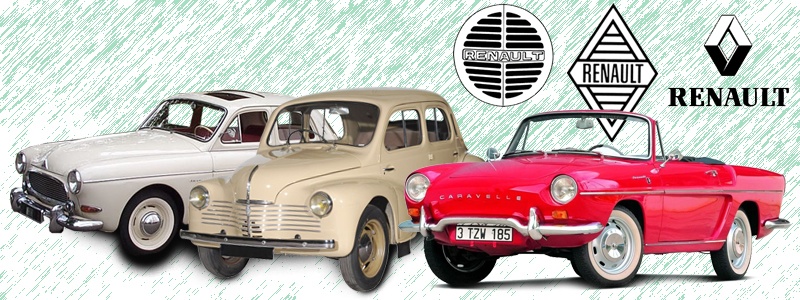 |
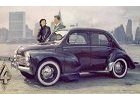 |
|
1947 - 1961
The first French car to reach the 1 million sales figure, the Renault 4CV was manufactured from 1946 to 1961, it being inspired by the economy and design of the Volkswagen Beetle. During World War 2 and with Germany occupying France Renault was under very strict instructions to design and manufacture military and commercial vehicles. More>> |
 |
 |
|
1951 - 1960
Most commentators of the day felt the Fregate was Renaults attempt to move "up market", an ambitious attempt given the company was still under the control of the French Government following its incestuous relationship with the 3rd Reich. More>> |
 |
 |
|
1951 - 1960
THE Renault Domaine featured simple, straight-forward lines without the frills and unnecessary bright work that so many of its contemporaries had. Better still there was an honest 80 cubic feet of loading space with the rear seat folded, to catch a bit of the station-wagon business then booming in many parts of the world. More>> |
 |
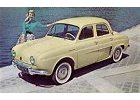 |
|
1956 - 1968
The Dauphine was, like its predecessor the 4CV, a unibody constructed vehicle. The Dauphine however, was a four door sedan with conventionally opening doors, unlike the "suicide" doors of the 4CV. More>> |
 |
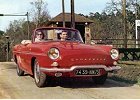 |
|
1959 - 1968
Renault entered the American postwar market in 1949 with the small 4CV sedan. This car struggled with its tiny 760cc 19-bhp rear-mounted, water-cooled engine. With a top speed of around 55 mph it was almost unsalable in the US resulting in only 1400 sales in that time declining to 374 by 1952. In 1953 Renault made some changes of adding the 110 ¼ inch wheel base, 60 bhp Fregate sedan but it was priced nearly $400 more than a Buick special, so it never got off the ground. More>> |
 |
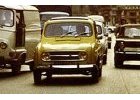 |
|
1961 - 1993
The Renault 4 was the first car with a fifth door, and thus it was the first true hatchback. Today it remains the most produced French car ever, reaching production figures over 8,000,000... More>> |
 |
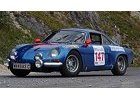 |
|
1963 - 1973
It was when Renault put a modified 1600 cc. engine borrowed from the R16 that the Alpine became a world beater, taking the first 3 places in Monte Carlo Rally in 1971 and World Rally Championships in 1971 and 1973. More>> |
 |
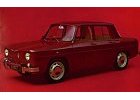 |
|
1963 - 1971
At the time, many journalists thought the R8 was a step backward for Renault as they had, the previous year, released the R4 with a more traditional front engine / front-wheel drive configuration. What Renault engineers banked on was the continuing popularity of rear engined cars in the European market. More>> |
 |
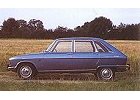 |
|
1964 - 1979
When Renault introduced its model 16 in December 1964 the concept of a five-door saloon was very new. It used a rear hatchback door with fold-down rear seats and although it had awkward styling, at the time it was unique. More>> |
 |
 |
|
1968 - 1979
The Renault engineers had done far more than simply bore the motor out a little, and the 16TS remains an object lesson in how to make something good something great. More>> |
 |
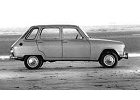 |
|
1968 - 1971
The Renault 6 was designed to supersede the Renault 4, and part of its design brief was that it should be larger, better looking and more luxurious - and thus more expensive. More>> |
 |
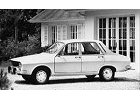 |
|
1969 - 1980
The Renault 12 featured very modern styling (for 1969!) which had clean, straight-cut lines featuring a classic "3 box" layout of four doors and a boot - however it was never as good as the Renault 16. More>> |
 |
 |
|
1965 - 1971
If you took the time to take more than a casual glance at the Renault 10, you would quickly realise just how magnificently proportioned and well engineered this wonderful car was, its sleek thoroughbred lines, its discreet touches of chrome. It was beautiful, elegant and restrained, a beauty that was so typically French. More>> |
 |
 |
|
1971 - 1980
The Renault R17 TS had all the right GT credentials: injected engine, five speed gearbox, four-wheel disc brakes, and distinctive styline. The car did an honest 110 mph, ignored cross-winds and smoothed out rough surfaces well. That augered well, but there was an achillies heel - the Renault 2+2's of the era were prone to understeer, but the R17 TS was the equivalent of a snow plough. More>> |
 |
 |
|
1971 - 1984
The successor to the Alpine A110 was the A310, initially powered by tuned 17TS/Gordini four-cylinder engine, still rear-mounted. The maximum power reaching 127 PS (93 kW; 125 hp), thanks to the use of 2 twin-barrel 45 DCOE Weber carburetors. But by the time the new model was released, France was no longer renowned for building spectacular motor cars. More>> |
 |
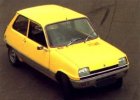 |
|
1972 - 1996
It was Renault's first supermini, and its most prominent feature was its styling by Michel Boue (who died before the car's release), which included a steeply sloping rear hatchback and front fascia. More>> |
 |
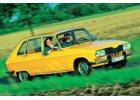 |
|
1973 - 1979
Given the Renault 16TS had been released in 1968, to some extent the car had dated, however the TX remained a fascinating car nevertheless. More>> |
 |
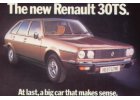 |
|
1975 - 1981
On April 25th, 1975 the Renault 30TS went on sale in its native France, offering more of everything than any modern Renault, and signalling to the rest of the world that the French factory intended to continue offering highly individual machinery throughout their range. More>> |
 |
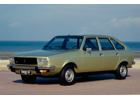 |
|
1975 - 1984
The Renault 20TL was equipped with the 1647cc push rod four, similar to the unit used in the 16TL and 17TS. In what was, by European standards, a large car, the engine was overstressed and underpowered, and this was born out in the mediocre performance and fuel consumption figures. A happy medium was reached when an overhead-camshaft 1995cc engine was installed in that same body shell to produce the 20TS. More>> |
 |
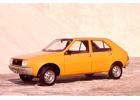 |
|
1976 - 1983
The 14 was designed for utility and comfort rather than high speed and brisk performance. The all-alloy transverse mounted, overhead cam engine of 1281 cc produced a hardly startling 57 bhp at 6000 rpm. What was disappointing was the very rubbery and vague feeling of the gear lever and linkages which made the gearbox feel like a unit from the pioneering days of front wheel drive - uncharacteristically disappointing from Renault. More>> |
 |
 |
|
1978 - 1983
The Renault 12 was introduced to Australia in 1970. A decade later it was finally superseded by a new model, but one that took Renault to an entirely different price group, and far away from the cheap-and-cheerful entry level. The Renault 18GTS had been introduced on French soil a few years earlier ( 1978), and for European buyers it was offered in basic TL form, powered by the same 1397cc engine fitted to the Virage. More>> |
 |
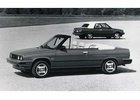 |
|
1982 - 1987
The Renault American Alliance was more than just a new car at its release. Indeed many considerred it to be an important political event, marking the strong return of Renault to the American market through the medium of its relationship with American Motors, which built the Alliance - an Americanized R9 - in its plant at Kenosha, Wisconsin. More>> |
 |
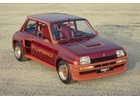 |
|
1980 - 1984
Set on fully exploiting their turbo image, the Regie Renault started to a modified R5 for Group 4 in 1975. Not only was the car intended to be a challenger in the World Rally Championship, it was also to be sold to the (sporting) public in detuned form, and was to embody a 'silhouette' look relevant to the front-drive/front-engined R5 hatchback so that the homme dans la rue could identify with the new car. More>> |
 |
 |
|
1980 - 1984
By no stretch of imagination could Renault's pre 1980 coupe range be deescribed as an overwhelming success. But things were about to change, with the release of a new semi-sporting two-door series which the big French manufacturer made great efforts to combine good looks with technical refinement. More>> |
 |
 |
 |
1986 - 1994
It had never been fashionable in France to knock the Regie, even when it was in dire difficulties in 1984-85, and Renault's return to full health was never in any doubt; only the speed at which this resurgence had been achieved. The 21 Turbo was a fine car - and ushered a new era of performance Renaults that we enjoy to this day. More>> |




